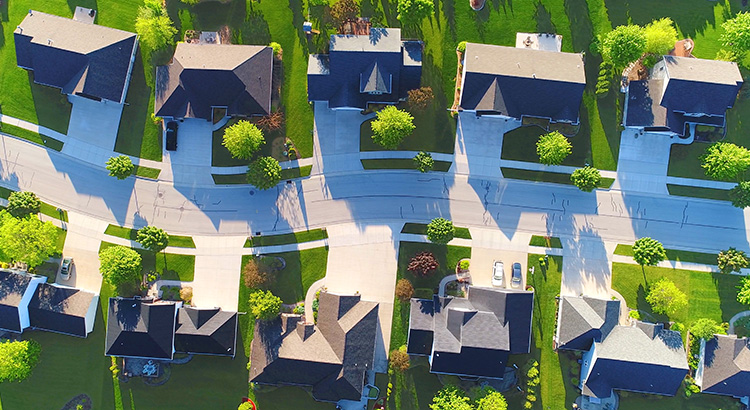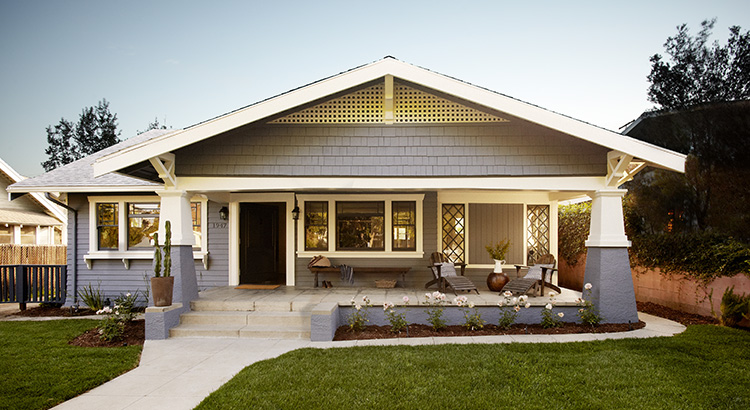3 Reasons Why We Are Not Heading Toward Another Housing Crash
With home prices softening, some are concerned that we may be headed toward the next housing crash. However, it is important to remember that today’s market is quite different than the bubble market of twelve years ago.
Here are three key metrics that will explain why:
- Home Prices
- Mortgage Standards
- Foreclosure Rates
HOME PRICES
A decade ago, home prices depreciated dramatically, losing about 29% of their value over a four-year period (2008-2011). Today, prices are not depreciating. The level of appreciation is just decelerating.
Home values are no longer appreciating annually at a rate of 6-7%. However, they have still increased by more than 4% over the last year. Of the 100 experts reached for the latest Home Price Expectation Survey, 94 said home values would continue to appreciate through 2019. It will just occur at a lower rate.
MORTGAGE STANDARDS
Many are concerned that lending institutions are again easing standards to a level that helped create the last housing bubble. However, there is proof that today’s standards are nowhere near as lenient as they were leading up to the crash.
The Urban Institute’s Housing Finance Policy Center issues a quarterly index which,
“…measures the percentage of home purchase loans that are likely to default—that is, go unpaid for more than 90 days past their due date. A lower HCAI indicates that lenders are unwilling to tolerate defaults and are imposing tighter lending standards, making it harder to get a loan. A higher HCAI indicates that lenders are willing to tolerate defaults and are taking more risks, making it easier to get a loan.”
Last month, their January Housing Credit Availability Index revealed:
“Significant space remains to safely expand the credit box. If the current default risk was doubled across all channels, risk would still be well within the pre-crisis standard of 12.5 percent from 2001 to 2003 for the whole mortgage market.”
FORECLOSURE INVENTORY
Within the last decade, distressed properties (foreclosures and short sales) made up 35% of all home sales. The Mortgage Bankers’ Association revealed just last week that:
“The percentage of loans in the foreclosure process at the end of the fourth quarter was 0.95 percent…This was the lowest foreclosure inventory rate since the first quarter of 1996.”
Bottom Line
After using these three key housing metrics to compare today’s market to that of the last decade, we can see that the two markets are nothing alike.
3 Reasons Why We Are Not Heading Toward Another Housing Crash

With home prices softening, some are concerned that we may be headed toward the next housing crash. However, it is important to remember that today’s market is quite different than the bubble market of twelve years ago.
Here are three key metrics that will explain why:
- Home Prices
- Mortgage Standards
- Foreclosure Rates
HOME PRICES
A decade ago, home prices depreciated dramatically, losing about 29% of their value over a four-year period (2008-2011). Today, prices are not depreciating. The level of appreciation is just decelerating.
Home values are no longer appreciating annually at a rate of 6-7%. However, they have still increased by more than 4% over the last year. Of the 100 experts reached for the latest Home Price Expectation Survey, 94 said home values would continue to appreciate through 2019. It will just occur at a lower rate.
MORTGAGE STANDARDS
Many are concerned that lending institutions are again easing standards to a level that helped create the last housing bubble. However, there is proof that today’s standards are nowhere near as lenient as they were leading up to the crash.
The Urban Institute’s Housing Finance Policy Center issues a quarterly index which,
“…measures the percentage of home purchase loans that are likely to default—that is, go unpaid for more than 90 days past their due date. A lower HCAI indicates that lenders are unwilling to tolerate defaults and are imposing tighter lending standards, making it harder to get a loan. A higher HCAI indicates that lenders are willing to tolerate defaults and are taking more risks, making it easier to get a loan.”
Last month, their January Housing Credit Availability Index revealed:
“Significant space remains to safely expand the credit box. If the current default risk was doubled across all channels, risk would still be well within the pre-crisis standard of 12.5 percent from 2001 to 2003 for the whole mortgage market.”
FORECLOSURE INVENTORY
Within the last decade, distressed properties (foreclosures and short sales) made up 35% of all home sales. The Mortgage Bankers’ Association revealed just last week that:
“The percentage of loans in the foreclosure process at the end of the fourth quarter was 0.95 percent…This was the lowest foreclosure inventory rate since the first quarter of 1996.”
Bottom Line
After using these three key housing metrics to compare today’s market to that of the last decade, we can see that the two markets are nothing alike.

Why You Need a True Expert in Today’s Housing Market
Why You Need a True Expert in Today’s Housing Market The housing market continues to shift and change, and in a fast-moving landscape like we’re in right now, it’s more important than ever to have a trusted real estate agent on your side. Whether you’re buying your...

How To Get Property Tax Relief In Salt Lake County. Elderly Or Low Income
How To Get Property Tax Relief In Salt Lake County. Elderly Or Low Income Navigating through the maze of property taxes can be a daunting task, particularly for the elderly or those with low incomes. However, in Salt Lake County, there are several options available to...

People Want Less Expensive Homes – And Builders Are Responding
People Want Less Expensive Homes – And Builders Are Responding In today’s housing market, there are two main affordability challenges impacting buyers: mortgage rates that are higher than they’ve been the past couple of years, and rising home prices caused by low...
55 Plus Townhomes Reviewed
As the demand for comfortable and inclusive living spaces for seniors continues to rise, it's crucial to understand the key factors that make a community truly exceptional. In this piece, we will specifically focus on the South Jordan and Daybreak areas in Utah...
What Makes Garden Park Town Homes In Daybreak South Jordan The Best Place For 55 And Older Adults
What Makes Garden Park Town Homes In Daybreak South Jordan The Best Place For 55 And Older Adults Welcome to the Utah Realty Blog Article where we delve into the reasons why Garden Park Town Homes in Daybreak South Jordan is an exceptional choice for 55 and older...

Home Prices Are Back on the Rise
Home Prices Are Back on the Rise Some Highlights Looking at monthly home price data from six expert sources shows the worst home price declines are behind us, and they’re rising again nationally. If you’ve put your plans to move on pause because you were worried about...

About 11,000 Houses Will Sell In The USA Today
About 11,000 Houses Will Sell Today Some homeowners have been waiting for months to put their house on the market because they don’t think people are buying homes right now. If that’s you, know that even though the housing market has slowed compared to the frenzy of a...

There’s Only Half the Inventory of a Normal Housing Market Today
There's Only Half the Inventory of a Normal Housing Market Today Wondering if it still makes sense to sell your house right now? The short answer is, yes. Especially if you consider how few homes there are for sale today. You may have heard inventory is low right now,...

Things To Know When Getting Ready To Buy A Home
Things To Know When Getting Ready To Buy A Home Are you in the market to buy your dream home? Congratulations! This is an exciting step in your life, but it can also be overwhelming and confusing at times. From navigating the financial aspects to understanding the...

Considering Selling Your Home As A Senior?
Considering Selling Your Home As A Senior? Let A Senior Real Estate Specialist (SRES) Be Your Guide! Are you a senior considering a move or possibly selling your home? Making decisions related to real estate can be overwhelming, especially as you enter the golden...
